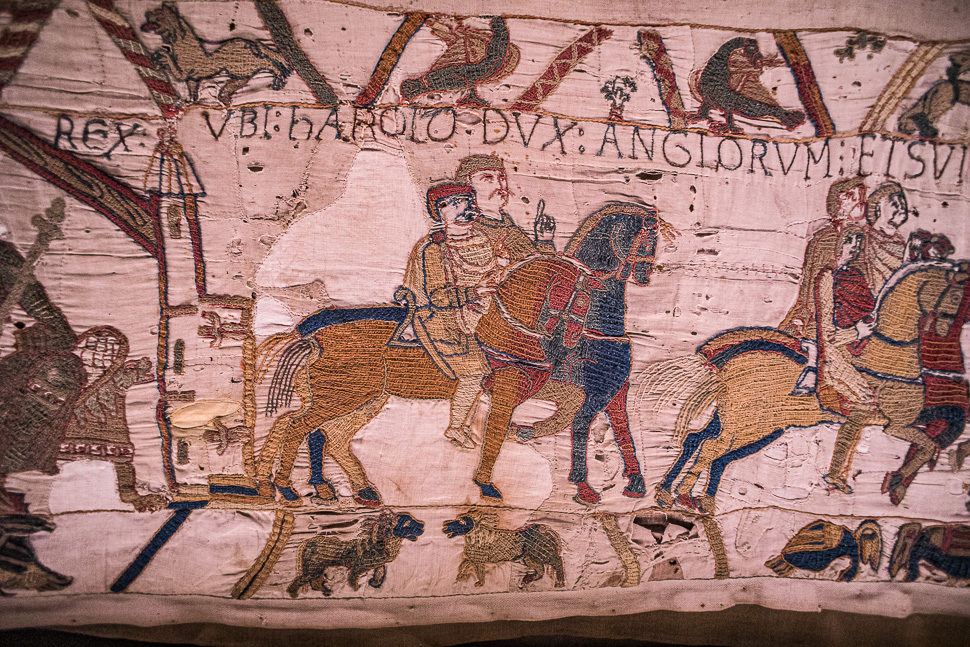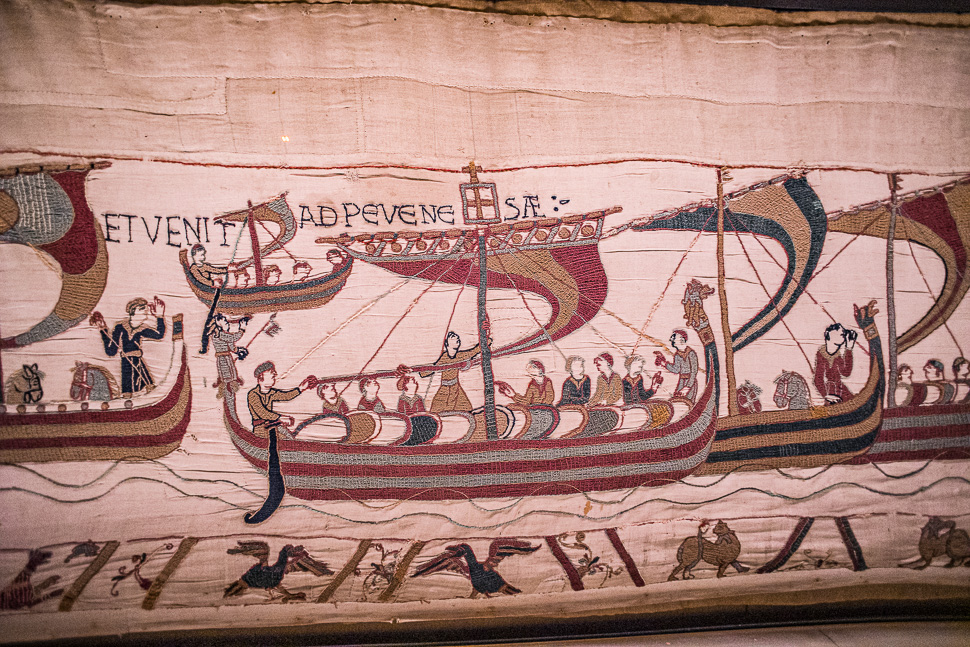
We had heard about the tapestry of Bayeux and were curious to see it personally, therefore a stop at this lovely town was a must.
Bayeux is also known as the first major town secured by the Allies during Operation Overlord. Charles de Gaulle made two famous speeches in this town, the first one in 1944, just a few days after the liberation of Bayeux.


The tapestry is an embroidered cloth nearly 70 metres long and 50 centimetres tall that depicts the events leading up to the Norman Conquest of England in 1066, led by William, the Duke of Normandy culminating in the Battle of Hastings. It is thought to date to the 11th century, within a few years after the battle. It tells the story from the point of view of the conquering Normans but is now widely accepted to have been made in England.

Equipped with an audio guide, the historic scenes depicted were explained to us as we went, which helped to understand the story of the conquest. Somewhere I read that it is called a medieval comic strip, which I think is quite accurate. Anyway, the purpose of the tapestry was to tell the story of the conquest to the illiterate.






The tapestry was kept at the Bayeux Cathedral until 1793 and exhibited annually to commemorate England’s Norman conquest.
It has had several lucky escapes, for example during 2 fires at the cathedral, which didn’t destroy it. After being rescued many times, the tapestry has survived until today and is a very fascinating piece of history.

Despite its name, the Bayeux Tapestry is actually an embroidery in wool thread on linen cloth. Most historians believe that Odo, Bishop of Bayeux and William the Conqueror’s half-brother, commissioned the embroidery to decorate the nave of the new cathedral of Notre-Dame of Bayeux.

The consecration of the episcopal church took place on July 14, 1077 by Odo of Bayeux. Originally built in the Norman-early Romanesque style, the cathedral is now largely Gothic.


Bayeux is a lovely town and the tapestry was really worth seeing personally for once. We had visited Battle, where the battle took place in 1066, during our visit to England: England part 2.
We will now head to another item on our bucket list: Mont Saint Michel – you can’t go to Normandy and not see this mesmerising abbey. More on our next post!
